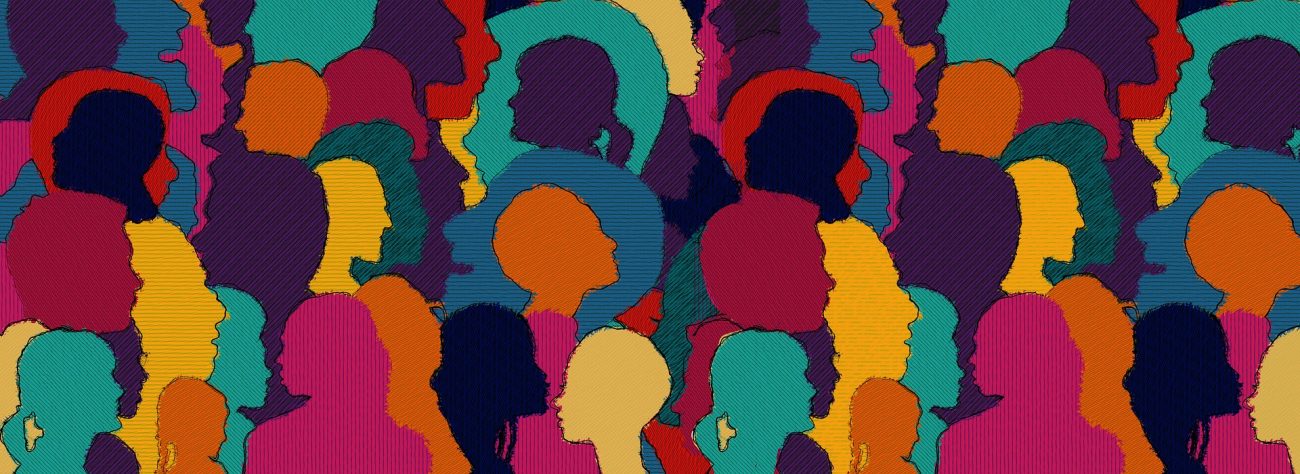
Four approaches to Inclusive Design – how to add diversity, equity and inclusion to your day-to-day
Inclusive design starts with acknowledging your biases and privileges. In the keynotes, we got a deep dive into what this actually means.
In our Inclusion by design event, we heard four talks on taking diversity, equity and inclusion (DEI) into account in our daily work. Here’s our recap from the event and a link to the recording.
Inclusive design starts with acknowledging your biases and privileges. In the keynotes, we got a deep dive into what this actually means.
One great point of view, which our senior product designer Jesse Ukkonen talks about in his article How do you belong? Diving deeper into diversity, equity and inclusion, is that DEI should be thought of as a skill that can be improved. The best way to improve is to educate yourself, widen your perspective and change your behaviour based on your new knowledge.
This recap gives four approaches to inclusive design. The section titles follow the talks given at the event.
Inclusive intersectional design
Our senior product designer Jesse Ukkonen makes it clear that inclusive and intersectional design is simply good design for everyone.
“The goal of inclusive design is not to design a product that fits every single person on the planet, but to recognise how diverse even a small set of people can be.”
Intersectionality means that people have more than one identity. This is why we cannot reduce individual users into a single category. As an example Ukkonen describes two kinds of athletes.
“A white Finnish male student in his 20s can be an athlete just like a dark-skinned British immigrant mother in their 40s can be an athlete – either of them might have a disability on top of that too.”
Ukkonen urges designers to think of inclusive intersectionality as an important tool that keeps you, for instance, from looking at athletes through a narrow lens that is obscured by stereotypes.
“There is no human being that would stay the same throughout their entire life. We all get older and sometimes we are broken, both physically and mentally. Good design takes these kinds of human factors into account.”
At the end of the keynote, our design lead Lassi Liikkanen, who also gave the welcome speech and introduction to the event, asked Ukkonen for general advice on how we should address these issues in a project as consultants.
“The good thing about being a designer and consultant is that I’m not there to be friends and agree on everything with the customer – it’s my job to raise these questions.”
Designing a humane future – including children’s best interest
Children are one user group that rarely gets attention in digital product design. In addition to poor usability, children are exposed to inappropriate content, fake news, unsafe contacts, privacy issues and stereotyped role models.
These are the issues that the international community of Designing for Children’s Rights addresses, for instance with their open source design guide.
“Usually our decisions are not aimed to do harm but humans are prone to multiple biases, which can produce biased data”, says Jonna Tötterman, co-founder of Designing for Children’s Rights.
According to UNICEF, roughly one in three internet users are under 18 years old. There are some laws and regulations that guide the digital product design process but, in the end, the companies that build the products also need to take responsibility. Taking children into account is also a wise business decision.
“Give any product to a toddler and you’ll see if it works.”
The default human – who is it hurting and what can we do
Sanna Rauhala, Design Anthropologist at Solita, looks at digital product design from the perspective of human behaviour and the human experience. As an example, she points out that many services have long been designed for an “average user” who has been male, most often a Caucasian one. This excludes a large part of the world’s population.
“Ignoring the social or physical context is not just bad inclusion practice, it’s bad design in general,” Rauhala says. “As a consequence, we might be creating something that is at best useless and at worst harmful.”
Rauhala also draws our attention to how we use words.
“Because things like words are so embedded in us, it is sometimes hard to understand that those words can have a different meaning to different people, and that they can have power over people in a way we can’t even imagine.”
In practice, Rauhala underlines the importance of thinking and listening: Who are you doing the product for? Who is it helping, who is it excluding, who can it hurt and, most of all, what is the impact?
DEI & Design – what we need to consider for inclusive design
As Inklusiiv’s DEI consultant Yesmith Sánchez says there seems to be no limit on how much you can learn about this topic.
“The more knowledgeable you become about the topic the more you realize you have to do, and sometimes people get overwhelmed”, Sánchez says.
Inklusiiv is an organisation and company that focuses on advancing DEI in working life and helps organizations to transform DEI into action.
“My advice is to go for one chunk at a time. That way you can see progress and you won’t get so frustrated.”
Sánchez points out that when you are not aware of diversity, equity and inclusion, you tend to overlook them. You’re not doing it because you’re a bad person or you don’t care about it. It’s simply because you do not know how to integrate it into our daily work – and that is an issue.
In your concrete actions, Sánchez advises to pay special attention to four common biases in digital service development:
- Confirmation bias
- Conformity bias
- Illusory correlation
- Availability heuristic
“We all have unconscious biases – it’s human nature and there’s no shame in having them. But what we actually do about them is important.”
To take things to an even more concrete level, Sánchez presents five steps to reduce bias in digital service and product development.
- Have DEI as a core value in your service/product development
- Learn about and identify unconscious biases
- Have a diverse team
- Customer-centricity
- Be mindful about the language, words, colours, pictures etc
Related reading & sources
There is a deep pool of literature and podcasts from which you can continue learning about this topic. Here’s something to get you started, curated for you by our one and only Jesse Ukkonen.
Books
- Mismatch, Kat Holmes
- Cross-Cultural Design, Senongo Akpem
- Invisible Women, Caroline Criado Perez
- Mother of Invention: How Good Ideas Get Ignored in an Economy Built for Men, Katrine Marçal
Articles and resources
- Inklusiiv’s DEI resource bank
- Microsoft & Inclusive design
- Accessibility, Usability, and Inclusion, W3C
- Belonging: A Conversation about Equity, Diversity, and Inclusion by Krys
- Getting Serious About Diversity: Enough Already with the Business Case
- The problem with that equity vs. equality graphic you’re using
- The digital rights of LGBTQ+ communities: Five steps towards an inclusive design process
- How tech companies can turn ‘commitments’ to diversity into action
- What exactly is a microaggression?



